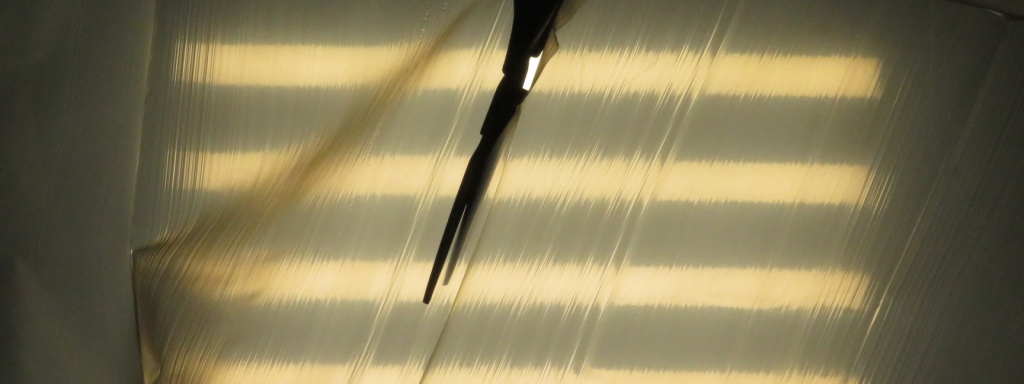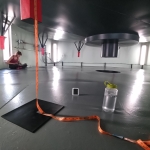
As with any pressure vessel, SAM has leaks. The current leak rate is higher than desired, therefore we are working to locate the holes, apply patches, and bring the total leak rate to a minimum. Our intent is to hold pressure for one week such that 6-day missions can pressurize the facility once, and with future, longer missions air will be added in a quantitative manner once each week, at most.
Recall that SAM has three modes of operation, where the first two missions were running in Mode 2, pressurized with flow-through air with a high degree of air quality monitoring, as noted in the data analysis. Inclusion II conducted two Mode 3 experiments in the course of their mission.
In the first part of June, Sean Gellenbeck and Matthias Beach isolated the lung from the rest of SAM, and then the lung and Test Module from the rest of SAM. In each instance they conducted a pressure test by raising the lung to roughly 36″, then closing the inlet valve and terminating the blower. The height of one of the eight lung feet was measured from the floor, and then again once each five minutes for one hour. The drop in height over time provides the total leak rate through the loss of the known column of air below the fixed diameter lung pan and membrane.
Leak rate = Pi * r^2 * drop (inches) * time (minutes)
While we do calculate the leak rate by volume of air, for ease of visualization we present it here instead as the loss in height of the lung.
With a max height just under 10 feet and a minimum height at zero, when one of the eight legs and feet touch the ground, the rate of descent is constant as the mass of the lung exerts the same pressure on the underlying column of air independent of its height. The temperature was measured with each height reading in order to provide raw height measurements and the height adjusted for temperature changes according to the ideal gas law.
The lung was found to have no significant leak rate, in fact, the lung rose during the one hour test due to a minor temperature increase. The lung and Test Module combined demonstrated a 1.3 inch lung drop per minute, or roughly 3.5 days sustained pressure if starting from the max height of 10 feet. The leaks in the Test Module will likely be readily corrected with a full application of silicone where two replacement windows were installed last spring.
 In the first and second week of October, Kai, Luna, and Natasha moved into the next important test—isolating the Engineering Bay (20 foot shipping container) from the Crew Quarters (40 foot shipping container) such that the lung, Test Module, and EB are treated as a single vessel.
In the first and second week of October, Kai, Luna, and Natasha moved into the next important test—isolating the Engineering Bay (20 foot shipping container) from the Crew Quarters (40 foot shipping container) such that the lung, Test Module, and EB are treated as a single vessel.
This proved to be a bit of a challenge as three electrical conduits, one fire detection conduit, and one water pipe run from the Engineering Bay into the Crew Quarters, making it very difficult to seal. It was determined that pulling all conduits was the simplest way forward. This included disconnection of the fire detection system, which required the UA Fire Marshall. Once the interface to the 20/40 bridge was clear of conduits, we sealed the far side with a plastic tarp and aluminum tape.
The lung, Test Module, and Engineering Bay combined demonstrated a leak rate of 0.1 inch lung drop per minute, or 19 hours sustained pressure if starting from the max height of 10 feet.
We have some work to do!

